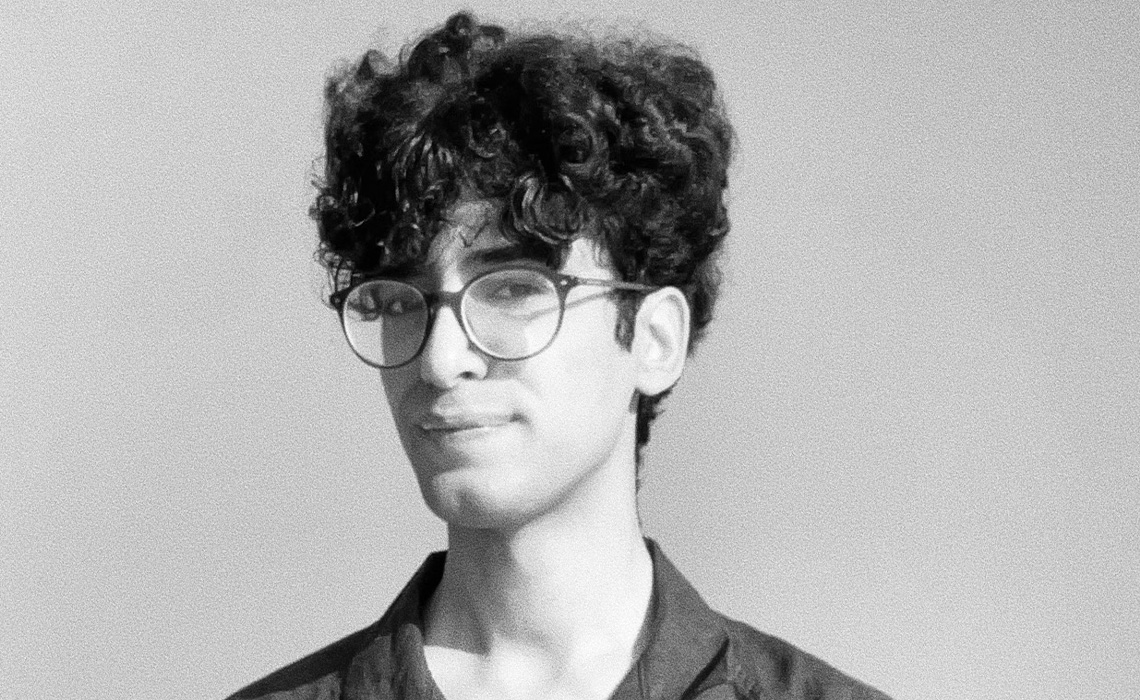The artist unpacks the layers in our relationships with landscapes and shares his work showing at the Kuwait Pavilion at this year’s Venice Biennale of Architecture.
Canvas: What draws you to the medium of photography?
Aziz Motawa: I must have been around 10 when I started taking pictures using a shared family camera. Many of the images were either blurry or way too close to the subject. There were a lot of pictures of shadows on the ground! I guess I still take pictures that way. I’m drawn to photography when the lens becomes an extension to my sensory experience of the world, rather than a technical way to simply recording something. Photographer Edward Weston described photography as “seeing plus”, and to me the lens is a portal into the intangible world, a deeper way of seeing. Sometimes making images involves me following a pack of stray dogs for a week, at other times it’s a series of barbed wire shot up close. My practice involves following my instincts and being attuned to non-human life. I get to fill in the gaps in my perception through images.
Your photography looks particularly at neglected landscapes and spaces.
My work is an active reflection of my complicated relationship with land and space in general. There are so many layers embedded in landscapes, whether historically, ecologically and personally. A huge part of my childhood was spent around an area north of Kuwait City called Sulaibikhat. The coastline there is made up of intertidal mudflats, a seemingly endless expanse of greyish clay that looks otherworldly and is unveiled when the tide rolls back. It is Kuwait’s epicentre for water desalination and previous American military camps (post-Iraqi invasion), and on a personal level it is where I temporarily lived, collected memories and photographs, and experienced the geographic triangulation of the abandoned theme park, Entertainment City. I often find that my visuals embody a liminality – a third space – where the natural, industrial and personal all congeal in the sump and pit of the sewage outflows that populate this geography of mudflats, unifying all realms in the ebb and flow of the area’s intertidal zones.
Are there any special memories that prompted this exploration?
I’ve been thinking about this a lot. My first encounter with a mudskipper, an amphibious fish that traverses between land and
sea, had to be the catalyst behind my obsession with mudflats. I must have been around 12 when I first noticed these creatures on treks with my father at the Doha Reserve, an enclosed semi- abandoned nature reserve. I am still fascinated by this species, which can form portals in the mud and exist in this duality, part-fish, part-land amphibian. The mudskippers inhabit an in-betweenness, which I relate to deeply.
My recent exhibition at Sultan Gallery featured a short film I put together called Seeds will Glow, using found footage I documented of my younger sister Dana, around 12 years ago. It was our very humble effort at creating a critical documentary of the environmental crisis for her science class. The short film also cuts to archival footage of the ‘Doha Dash’, an accidental fire- turned-explosion that occurred at the now-abandoned American military base Camp Doha in Kuwait in 1991, after the Gulf War had already ended. What was deemed one of the most disastrous self-inflicted accidents in US military history left the adjacent Doha Reserve completely barred off due to contamination by depleted uranium. In 2001, efforts were made to remove the area’s topsoil and discard the contaminated terrain. The short film cuts between personal archives of my little sister and I at the reserve and a collective archive of the nearby explosion. In it, I visually process how both personal memory and ecological disasters can exist in parallel to each other.
How does the natural environment reflect our contemporary times?
The Gulf’s rapid urbanisation has left behind a lot of crucial environmental knowledge. Everything from celestial mapping, detailed recordings of region-specific seasons and the sustainable fishing and architectural practices of the past are all absent from today’s conversations about environmental sustainability in the Gulf. This is not to romanticise a bygone past in the extremely harsh environment of the pre-oil Gulf. I do argue however that finding historical gaps and unearthing counter-narratives in history can inform contemporary times when it comes to understanding regional ecosystems and how humans have habituated within them. Poetry, myths and storytelling are all understated tools of unearthing and sharing environmental knowledge.
Your recent show at Sultan Gallery highlighted how your work explores “common flesh”. What is this concept and how does
it help express the magnitude of environmental concerns?
I’m inspired by the notions of ‘deep ecology’, which is an environmental philosophy that values the interconnectedness of all living beings and promotes a shift from human-centred thinking to an eco-centric perspective. It emphasises the importance of living in harmony with nature and recognising the intrinsic value of non-human life forms. The land textures of mud and algae around sewage outflows resemble human skin to me. There’s a permeability of boundaries that’s visually depicted between my own body and the landscape around me. The neglected and abused ecology is akin to the neglected and abused body on the peripheries of industrial zones.
How do you see your practice developing?
My most recent project involves co-founding a collective of architects, researchers and artists called Akkaz Collective. The projects we put together involve looking at counter-histories through the recording of oral history, as well as speculative storytelling as a form of historicising a subverted past. Our work is currently displayed in the Kuwait Pavilion at the Venice Biennale of Architecture in the form of installation, photographic prints and publications. Beyond that, I’m working on experimental short films and sound compositions, which is deeply exciting for me.
This interview first appeared in Canvas Issue 108: The Root of It All



